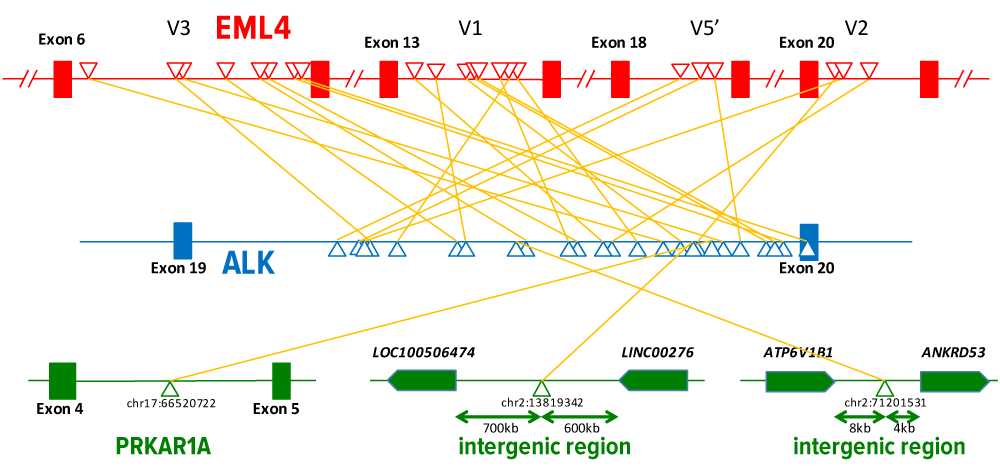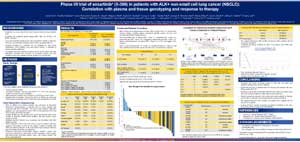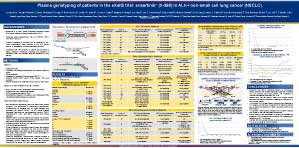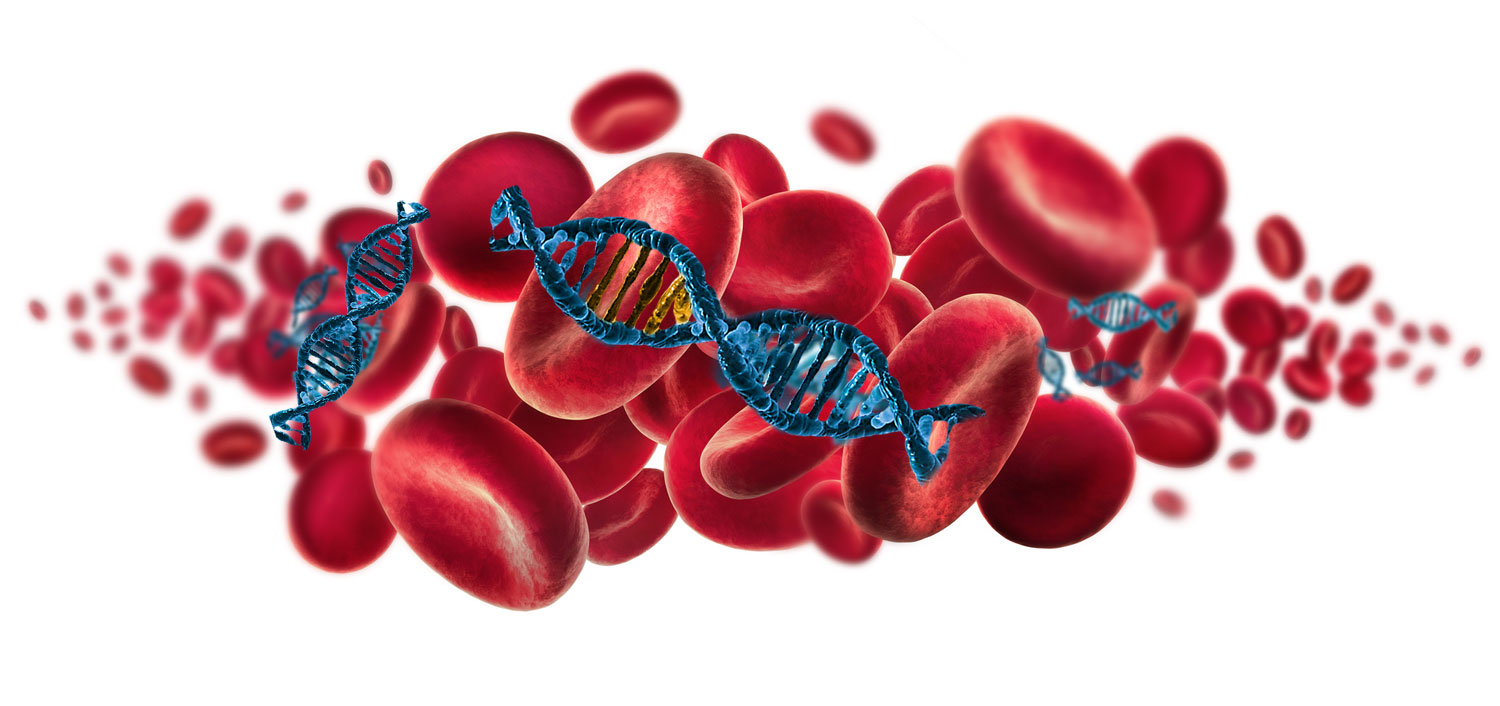
ALK Fusions
& Resistance
EML4 is not the only partner.
FISH and IHC have shown to give discordant results and in one
study the use of FISH or IHC alone would have
missed 25% of ALK-positive cases.7
Anaplastic lymphoma kinase (ALK) is a receptor tyrosine kinase. Mutations in ALK have been noted for driving a variety of cancers. ALK fusions have been seen in non-small cell lung cancer (NSCLC)1, Ovarian cancer2, and colorectal cancer3. ALK fusions can occur in the entire ALK tyrosine kinase domain. Missense mutations in ALK have been found in some neuroblastomas4. Additionally, copy number gains have been observed in renal cell carcinoma5 and rhabdomyosarcoma.
The ctDx platform has proven ability to discovery ALK gene fusions regardless of the fusion partner gene or breakpoint. The technology allows for the discovery of novel partners such as PRKAR1A or even fusions to non-coding regions. The assay also covers the tyrosine kinase domain of ALK where resistance mutations can occur, such as ALK C1156Y.
When tumor pathology is driven by ALK fusions, the tumor cells have been shown to be sensitive to ALK kinase inhibitors, such as crizotinib, and therefore have been recommended by the National Comprehensive Cancer Network (NCCN) for front-line therapeutic treatment of NSCLC patients.8

The assay also covers the entire tyrosine kinase domain of ALK where resistance mutations can occur. Additionally, the assay is able to detect ALK copy number amplifications (CNV).
| Canonical Resistance Mutations |
|---|
| G1123S, 1151Tins, 1152P/R, C1156Y/T, I1171H/S/T/N, F1174C/L/V, V1180L, L1196M, L1198F, G1202R, G1202del, D1203N, S1206C/F/Y, G1210K, F1245C, F1269A/S, R1275Q, C1156Y+L1198F, F1174L+E1210K |
1
Choi et al. 2008 Identification of novel isoforms of the EML4-ALK transforming gene in non-small cell lung cancer.
Horn and Pao 2009 EML4-ALK: honing in on a new target in non-small-cell lung cancer.
Koivunen et al. 2008 EML4-ALK fusion gene and efficacy of an ALK kinase inhibitor in lung cancer.
2Ren et al. 2012 Identification of anaplastic lymphoma kinase as a potential therapeutic target in ovarian cancer.
3Lin et al. 2009 Exon array profiling detects EML4-ALK fusion in breast, colorectal, and non-small cell lung cancers.
Lipson et al. 2012 Identification of new ALK and RET gene fusions from colorectal and lung cancer biopsies.
4Chen et al. 2008 Oncogenic mutations of ALK kinase in neuroblastoma.
5Debelenko et al. 2011 Renal cell carcinoma with novel VCL-ALK fusion: new representative of ALK-associated tumor spectrum.
Sukov et al. 2012 ALK alterations in adult renal cell carcinoma: frequency, clinicopathologic features and outcome in a large series of consecutively treated patients.
6Choi et al. 2008 Identification of novel isoforms of the EML4-ALK transforming gene in non-small cell lung cancer.
Horn and Pao 2009 EML4-ALK: honing in on a new target in non-small-cell lung cancer.
7Cabillic et al. 2014 Parallel FISH and immunohistochemical studies of ALK status in 3244 non-small-cell lung cancers reveal major discordances.
8NCCN Clinical Practice Guidelines in Oncology (NCCN Guidelines) - Non-small cell lung cancer. Version 4.2015. www.nccn.org


